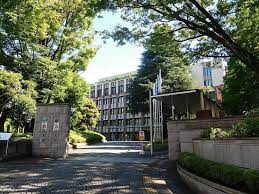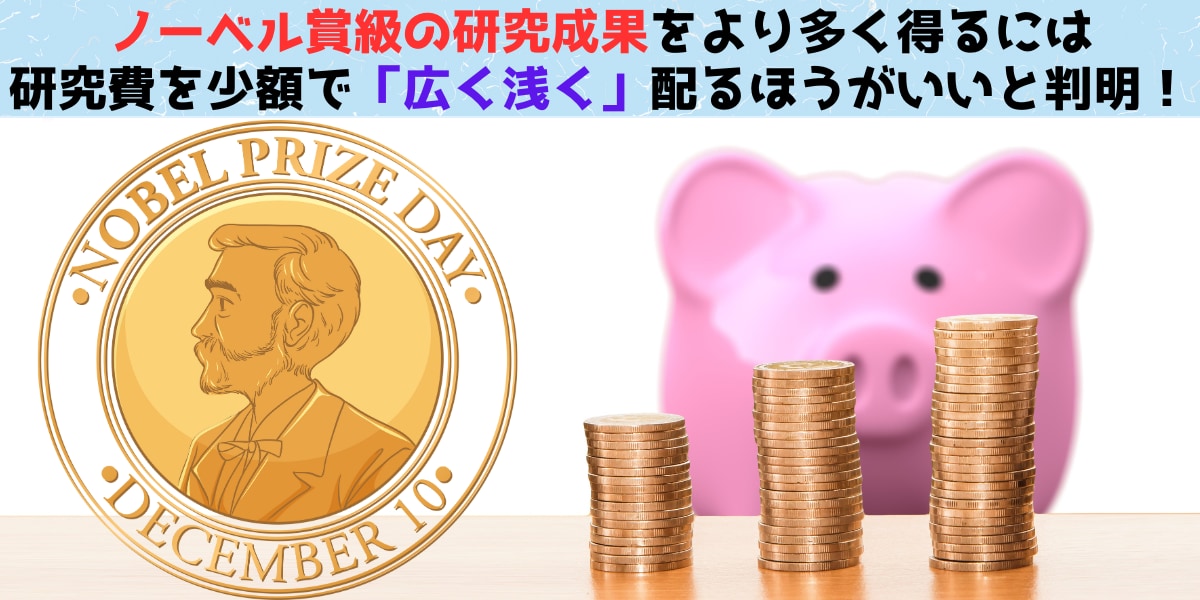
Creating Nobel Prize-level results: the importance of research funding allocation
-Analysis of scientific research funding in the life science and medical fields-
-The significance of distributing small research funds to many researchers-
– We will deliver summaries from TSUKUBA JOURNAL articles.

University of Tsukuba and Hirosaki University:
We investigated all scientific research grants allocated to the life science and medical fields since 1991.
How to create Nobel Prize-worthy topics:
Funding is needed to encourage the creation of nascent topics and Nobel Prize-worthy topics.
For researchers who receive grants, the more research funding they receive, the more results they can produce.

Research funding allocation method:
“Distributing small research funds to many researchers” and “distributing large research funds to a small number of researchers”
Which will lead to more innovation?
It is best to distribute small amounts to many:
We analyzed the best distribution in terms of investment efficiency in the life science and medical fields.
It has been found that “distributing small amounts of research funds to many researchers is more effective.”
Target of this research:
Targets all scientific research grants allocated to life science and medical fields since 1991.
Research expenses (amount and research type),
Research results (number of papers, number of emerging topics, number of Nobel Prize-level topics),
We comprehensively analyzed the correlation between the two companies.
Research Results: PLoS ONE Paper
For researchers on the receiving side, the more research funding they receive, the more research results they can produce.
The efficiency of producing research results relative to the total amount of investment was analyzed from the perspective of the investor.
If 50 million yen or more is distributed to some:
In the case of high-value distribution, the generation of research results leveled off.
The number of Nobel Prize-level topics has decreased compared to before receiving research funding.
If you distribute 5 million yen or less to many people:
“Distributing less than 5 million yen to many people” is much more effective than “distributing large amounts of research funds to a small number of researchers.”

This research group:
So far, we have established a method for quantitatively identifying emerging topics and Nobel Prize-level topics.
The ” relationship with researchers in creating these topics” was clarified in the PLoS ONE paper.
This time’s results:
This will provide “fundamental knowledge that will contribute to Japan’s research policy and research funding administration.”
https://www.tsukuba.ac.jp/journal/society-culture/20230822143000.html

The effectiveness of Japanese public funding to generate emerging topics in life science and medicine
To clarify how large grant amounts and which categories are more effective in generating emerging topics
from both the PI and investment perspectives,
we analyzed awarded PI publications containing emerging keywords (EKs; the elements of emerging topics) before and after funding.
Our results demonstrated that,
in terms of grant amounts, while PIs tended to generate more EKs with larger grants,
the most effective investment from the perspective of investor side was found in the smallest amount range for each PI (less than 5 million JPY /year).
Second, in terms of grant categories,
we found that grant categories providing smaller amounts for diverse researchers without excellent past performance records
were more effective from the investment perspective to generate EK.
https://journals.plos.org/plosone/article?id=10.1371/journal.pone.0290077